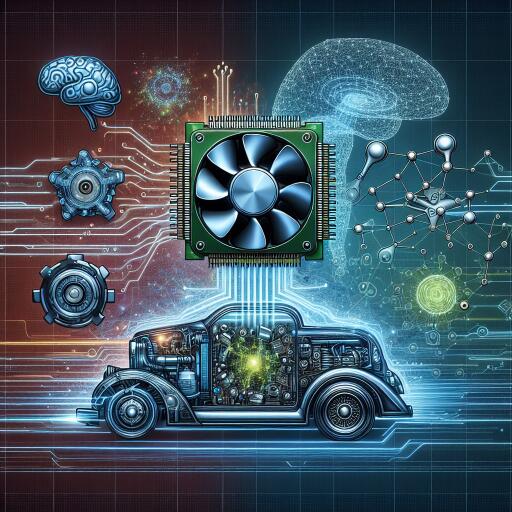Council Post: GPUs: The Engine Behind AI Evolution
Originally just the powerhouse behind advanced computer graphics and video games, Graphics Processing Units (GPUs) have evolved far beyond their initial purpose. As the AI sector has expanded, so too has the role of GPUs, now seen as a crucial pillar in the infrastructure supporting the development and application of machine learning and deep learning technologies.
The advent of generative AI has ushered in a new era where GPUs are not just beneficial but essential for high-performance computing, particularly in the realms of neural networks and deep learning models. This evolution marks a significant departure from GPUs’ traditional applications, broadening their impact across various industries and making AI technologies increasingly accessible to a wider audience.
Unlike Central Processing Units (CPUs), which excel in executing sequential tasks, GPUs thrive on parallel processing. With thousands of cores designed for simultaneous data handling, GPUs shine when performing matrix multiplications – a cornerstone calculation process in training and operating neural networks and large language models (LLMs). This attribute notably enhances GPUs’ capability to manage AI-driven tasks, offering speedy training and inference times that CPUs struggle to match.
One of the significant advantages of GPU systems is their scalability, reaching supercomputing levels, supported by an extensive and deep software ecosystem. Predictions suggest that the GPU market will witness substantial growth, estimated at 32.7% over the upcoming five years, underlining the increasing reliance and value placed on these powerful processors within the tech landscape.
In the architecture of AI servers, a symbiotic relationship between CPUs and GPUs—referred to as hybrid computing—marries the swift processing of CPUs with the bulk data handling capacity of GPUs. This combination harnesses the strengths of both processing units, making it analogous to having both a high-speed Ferrari and a capacious dump truck at one’s disposal, each serving distinct purposes within the computational framework.
GPUs are proving crucial beyond the confines of scientific research, facilitating AI integration into diverse sectors. The finance sector, for instance, is leveraging AI to refine banking operations and trading strategies. Meanwhile, the realms of retail and telecommunications are adopting generative AI to enhance customer engagement and operational efficiency.
In healthcare, AI-powered by GPU computing is revolutionizing patient care through the analysis of electronic health records, expediting drug discovery and improving diagnostics through advanced image analysis. Similarly, governments are harnessing AI and natural language processing technologies to enhance the security, efficiency, and transparency of public services.
Despite the prowess of LLMs like GPT-4, their closed-source nature, combined with the immense computational power and financial resources required for their operation, restricts accessibility. Conversely, GPUs are facilitating a shift towards smaller, open-source AI models that promise greater accessibility and data privacy. Notably, models such as Meta’s Llama offer comparable efficiency on a much smaller scale, enabling operation on standard home computers and allowing for customization and privacy in data handling.
Data center companies are at the forefront of the open-source AI movement, offering infrastructure services that allow direct access to specialized GPU servers. This approach democratizes AI, enabling smaller firms and researchers to engage with cutting-edge technology while safeguarding data privacy.
The democratization of AI, powered by the computational might of GPUs, parallels a technological revolution, making sophisticated computing and AI tools accessible to a broader audience. This shift not only lowers the barrier to entry for innovations but also fosters a collaborative ecosystem for technological advancement, ensuring that the potential benefits of AI are within reach for many rather than a select few.
As the technology landscape continues to evolve, GPUs stand as a testament to the transformative power of AI, driving forward the fifth industrial revolution and reshaping our society in unprecedented ways.










